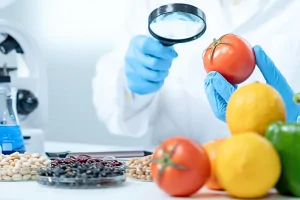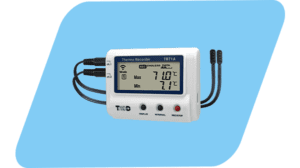 Hazard Analysis and Critical Control Points or HACCP is a systematic approach to preventing foodborne illnesses by identifying potential hazards throughout the food chain. The goal is to monitor and control these hazards at critical points in the production, packaging, and distribution process to reduce risks and ensure food safety rather than to have to test the finished product to make sure it is safe.
Hazard Analysis and Critical Control Points or HACCP is a systematic approach to preventing foodborne illnesses by identifying potential hazards throughout the food chain. The goal is to monitor and control these hazards at critical points in the production, packaging, and distribution process to reduce risks and ensure food safety rather than to have to test the finished product to make sure it is safe.
Who Needs HACCP?
HACCP originally grew out of a need by NASA to ensure that food produced by Pillsbury was safe for space flights. Today it is mandated by the FDA and USDA for juice, meat, and seafood. However, any business that handles food should have a HACCP compliance plan to comply with regulations and ensure food safety. This includes:
- Restaurant
- Food manufacturing plants
- School cafeterias
- Nursing homes
What Are the Seven Key Principles of HAACP?
- Conduct a hazard analysis for any biological, physical, or chemical hazard that can make food unsafe
- Identify critical points in the process where control can prevent hazards
- Establish limits for these critical points
- Implement monitoring procedures at these points to collect relevant data
- Create corrective actions to be taken when monitoring identifies issues
- Establish verification procedures to make sure the plan is adequate and working as intended
- Create record-keeping procedures for the hazard analysis, HACCP plan, limits and
monitoring activities, corrective actions, and verification processes.
Benefits of HACCP Compliance
One of the key areas in a HACCP plan requires documenting food temperatures at critical points and setting alarms for unsafe conditions. This helps you:
- Avoid product recalls due to spoilage or contamination with the concurrent financial loss and reputational damage
- Prove your best practices to auditors
- Demonstrate your commitment to food safety
HACCP Compliance Made Easy with T&D Data Loggers
T&D temperature data loggers streamline HACCP compliance by automating several key tasks:
- They continuously record temperatures around the clock, eliminating the need for manual monitoring and providing a complete electronic record.
- These loggers can be programmed to send instant email alerts whenever temperatures deviate from safe zones, allowing for prompt intervention
- Data is automatically uploaded to a secure, cloud WebStorage Service, which facilitates easy access and sharing with auditors during inspections.
- The loggers can generate reports with charts and tables, ensuring a clear and organized presentation of temperature data.
These features combined make T&D data loggers a valuable tool for restaurants, schools, food processors, or any other business that handles food to ensure food safety and maintain HACCP compliance.
Features of T&D TR-7A Wireless Series
 The T&D TR-7A series is a popular choice for HACCP compliance. These Wi-Fi data loggers offer:
The T&D TR-7A series is a popular choice for HACCP compliance. These Wi-Fi data loggers offer:
- Wireless connectivity: View data directly from your phone or tablet without a network.
- Standalone operation: Runs on battery power for flexible placement.
- LCD display: Shows current temperature and battery status.
- Dual temperature sensors: Monitor temperatures in two locations simultaneously
- Optional humidity sensor: Track both temperature and humidity for comprehensive food safety monitoring.
Conclusion
T&D’s WiFi temperature dataloggers are an effective solution for achieving HACCP compliance. They simplify data collection, automate reporting, and provide peace of mind by ensuring food safety throughout your operation.
For more information on T&D Wireless Temperature Data Loggers, or to find the ideal solution for your application-specific needs, contact a CAS DataLogger Application Specialist at (800) 956-4437 or request more information.

